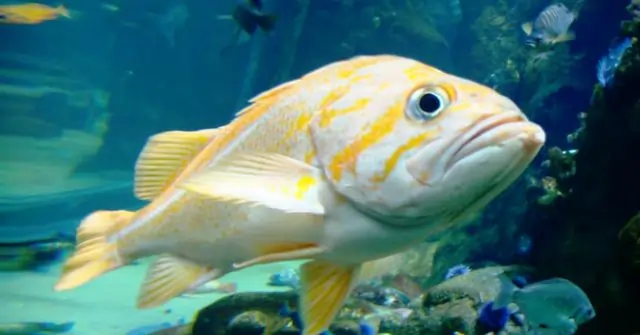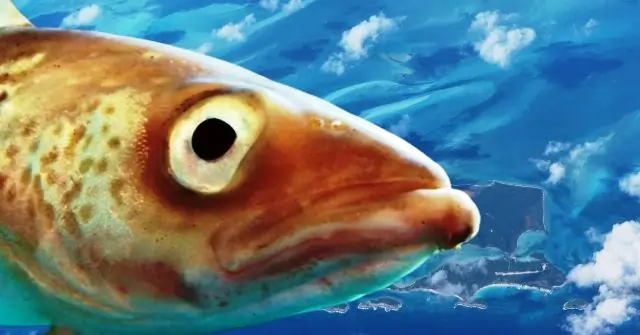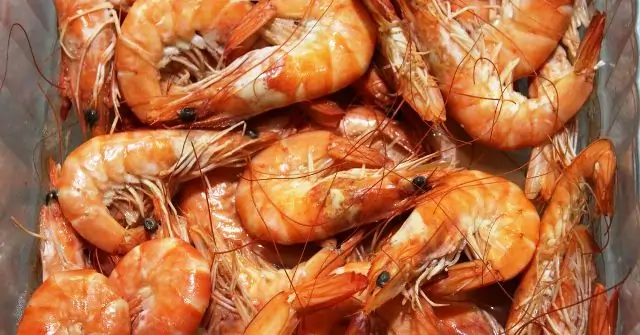Most Popular Fish in Europe
Europe has a rich history and a strong liking for delicious food; seafood is no exception! From busy fish markets to warm seaside restaurants, Europeans have loved the sea’s treasures for centuries. But with so many varieties gracing our plates, it can be tricky to know which fish are the Most Popular Fish in Europe. Understanding these culinary stars not only helps you navigate menus and make informed choices at the market but also allows you to explore the fascinating world of European seafood culture. So, explore in with us as we explore the top fishes Europeans love to eat!
Top 5 Most Popular Fish in Europe
1. Tuna

| Feature | Description |
|---|---|
| Species Varieties | Tuna includes bluefin (rich flavor), albacore (lighter taste), and skipjack (firm texture). |
| Health Benefits | High in protein and omega-3 fatty acids, beneficial for heart health. |
| Culinary Uses | Versatile in cooking; can be grilled, baked, or added to salads. Each European country has unique preparations. |
| Conservation Status | Efforts are in place for sustainable fishing, especially for bluefin tuna, which is closely monitored due to overfishing. |
| Buying Guide | Freshness: Look for bright color and firm texture. Sustainability Labels: Choose responsibly sourced. Canned Tuna: Pay attention to species and preservation method. |
| Seasonality | Bluefin is best in late summer, albacore in the fall, and skipjack throughout the year. |
| Preparation Tips | Avoid overcooking to maintain moistness. Suitable for grilling or salads. |
| Pairings | Pairs well with a variety of wines and seasonings, such as crisp white wine or light red, and herbs like rosemary or thyme. |
| Conservation Tips | Choose line-caught or sustainably farmed tuna to support sustainable fishing. |
| Nutritional Profile | Loaded with vitamins and minerals, supporting a healthy diet. |
| Cultural Notes | Tuna plays a significant role in Europe’s culinary heritage, featured in dishes like “Tonno alla Genovese” and “Tuna Empanada.” |
| Recipe Ideas | Try making traditional European dishes like Nicoise salad from France or grilled tuna steak seasoned with Mediterranean herbs. |
2. Cod

| Feature | Description |
|---|---|
| Culinary Versatility | Fresh, dried, salted, smoked uses. Integral in European dishes. |
| Cultural Significance | Integral to European maritime history. |
| Sustainability | Sustainable fisheries are vital. |
| Buying Guide | Freshness: Look for moist, translucent appearance. Sustainability Labels: Prefer MSC-certified products. Should smell mild, not fishy. |
| Seasonality | Best consumed in colder months for freshness. |
| Preparation Tips | Suitable for baking, frying, poaching, grilling. Simple seasoning enhances flavor. |
| Pairings | Pairs well with light white wines, fresh herbs, lemon. |
| Conservation Tips | Opt for line-caught or sustainably farmed. |
| Nutritional Profile | Rich in vitamins B12, B6, protein, omega-3 fatty acids. |
| Cultural Notes | Central in many cuisines, e.g., British fish and chips, Portuguese bacalhau. |
| Recipe Ideas | Try in traditional recipes or experiment with new ones, like French Brandade de Morue. |
3. Salmon

| Feature | Description |
|---|---|
| Wild vs. Farmed | Differences in taste and environmental impacts. Farmed salmon ensures sustainability; wild salmon often preferred for taste. |
| Preparation Methods | Enjoyed smoked, cured, or fresh. European dishes feature salmon in various forms. |
| Health Aspects | Rich in omega-3 fatty acids, vitamins, and minerals. |
| Fishing and Farming Practices | Emphasis on sustainable methods across Europe. |
| Buying Guide | Choose vibrant, moist fresh salmon. For smoked salmon, seek glossy, evenly colored slices. Opt for eco-certified products. |
| Seasonality | Best consumed during spring and autumn for optimal freshness. |
| Preparation Tips | Can be grilled, baked, or pan-fried. Minimal seasoning recommended to preserve natural flavors. |
| Pairings | Pairs well with white wines, dill, and lemon. |
| Conservation Tips | Select line-caught or sustainably farmed options to support environmental health. |
| Nutritional Profile | High in protein, vitamin D, and omega-3 fatty acids. |
| Cultural Notes | Integral to European cuisines, with variations like Gravlax in Scandinavia. |
| Recipe Ideas | Grilled salmon with dill and lemon, smoked salmon on rye bread, or salmon en papillote are popular recipes. |
4. Alaska Pollock

| Feature | Description |
|---|---|
| Industry Importance | Essential to the global seafood market, often found in processed foods like fish sticks and surimi. |
| Culinary Applications | Used in a variety of dishes, from fish fillets to fish burgers. Fresh and processed forms are popular. |
| Environmental Impact | Fishing practices aim to be sustainable, with regulations in place to protect populations. |
| Buying Guide | Look for firm, white fillets when choosing fresh. For processed Alaska Pollock, seek products with minimal additives and MSC certification. |
| Seasonality | Best when consumed during late winter to early spring for peak freshness. |
| Preparation Tips | Can be baked, fried, or added to soups and stews. Batter and breadcrumbs add a crispy texture when fried. |
| Pairings | Pairs well with light white wines, lemon, and tartar sauce for a classic combination. |
| Conservation Tips | Choosing products with sustainability certifications like MSC supports responsible fishing. |
| Nutritional Profile | A good source of protein and low in fat, making it a healthy seafood option. |
| Cultural Notes | Pollock is a key ingredient in traditional European dishes, particularly in processed seafood products. |
| Recipe Ideas | Alaska Pollock fish tacos or fish pie are delicious ways to enjoy this versatile fish. |
5. Shrimp (Prawns)

| Feature | Description |
|---|---|
| Variety and Selection | Shrimp come in various types, such as common shrimp, brown shrimp, and Dublin Bay prawns, each with its unique flavor. |
| Culinary Uses | Used in a wide range of dishes, from simple grilled shrimp to complex paellas and seafood stews. |
| Sustainability | Focus on sustainable farming and responsible wild catch to address environmental concerns. |
| Buying Guide | Choose shrimp that are firm-bodied with a snapping shell.Opt for wild-caught or sustainably farmed shrimp with clear traceability. |
| Seasonality | Best seasons vary by type; generally, spring and summer offer the freshest options. |
| Preparation Tips | Shrimp can be boiled, grilled, fried, or added to stews. Cooking time should be brief to avoid toughness. |
| Pairings | Complements white wines, garlic, herbs, and citrus flavors well, enhancing the taste. |
| Conservation Tips | Supporting sustainable practices like choosing line-caught or eco-certified farmed shrimp helps protect marine ecosystems. |
| Nutritional Profile | Shrimp are low in calories and a good source of protein, selenium, and vitamin B12. |
| Cultural Notes | Shrimp have a significant place in European cuisine, featured in traditional dishes across various countries. |
| Recipe Ideas | Try making a classic shrimp cocktail, garlic shrimp, or incorporate them into a seafood paella for a taste of European culinary tradition. |
FAQ on “Most Popular Fish in Europe”
Q- What is the most popular fish eaten in Europe?
A- Cod and tuna are among the most popular fish eaten in Europe due to their versatility and taste.
Q- Are there sustainable options for popular fish in Europe?
A- Yes, look for MSC-certified seafood to ensure sustainable choices for popular fish like salmon and cod.
Q- What is a must-try fish dish in Europe?
A- Try the classic Fish and Chips in the UK or Paella with seafood in Spain for a taste of local favorites.
Q- Can I find fresh and wild salmon in Europe?
A- Yes, especially in northern countries like Norway, which is renowned for its wild and farmed salmon
Blog Post Conclusion
In this blog post, we talked about the importance of picking good, sustainable seafood. We hope it inspires you to try out the different kinds of seafood Europe has to offer. Enjoy discovering the rich tastes and traditions of European seafood. Happy eating!
Join Our Seafood Community: Share and Discover
Please share your own seafood recipes and stories with us. Keep following our blog for more tips and guides on eating sustainably. Let’s learn together!
